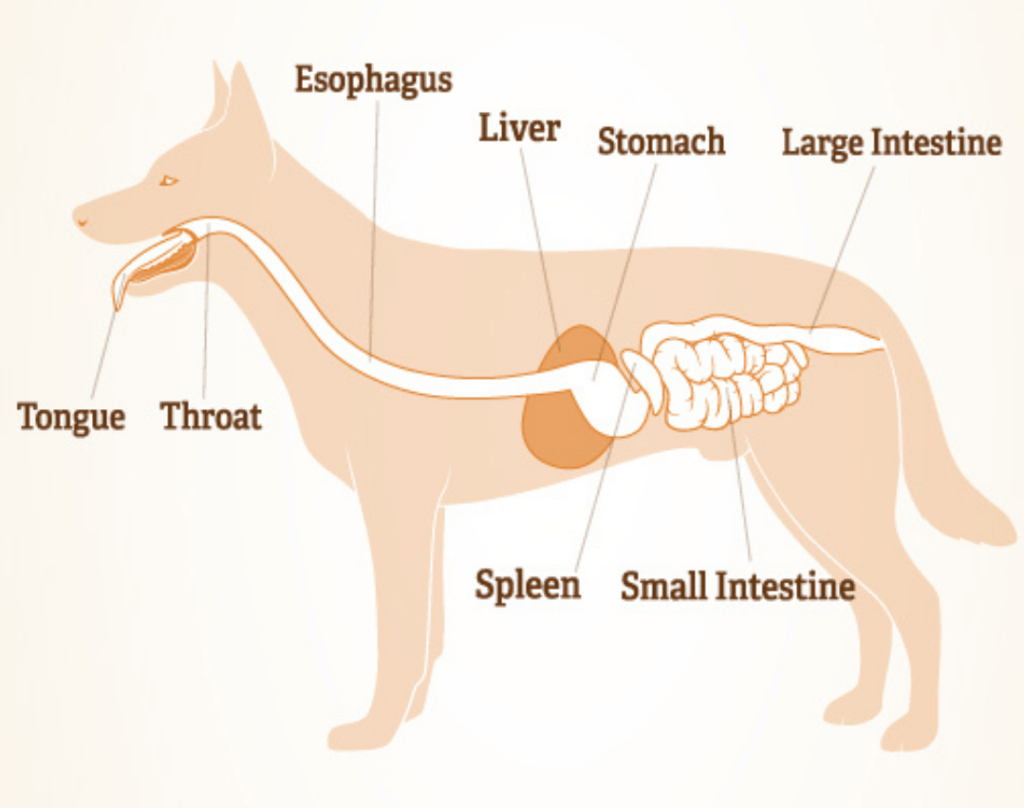Your cart is currently empty.
TLC Pet Food breaks down the ins and outs of canine digestion, explaining what happens once your dog’s tasty kibble makes its way from bowl to mouth.
TLC Pet Food breaks down the ins and outs of canine digestion, explaining what happens once your dog’s tasty kibble makes its way from bowl to mouth.
You’ve decided to feed your dog TLC a complete and balanced diet from a company you trust. You know that the food they’re eating is made with fresh, natural ingredients and packed with beneficial nutrition but do you understand what happens once their tasty kibble makes its way from bowl to mouth? We break down ‘The Ins and Outs of Canine Digestion’ to give you a better understanding of how it all works; how the essential nutrients, found in every bite of TLC, are broken down and used to provide your pup with Whole Life Nutrition™.

Did you know that digestion begins the second your pup’s kibble enters their mouths? The tongue helps to direct the food throughout the mouth, while saliva softens and teeth tear, chew and crush, in preparation for the next stage of digestion.
From the mouth, your dog’s food travels through a short, muscular tube called the esophagus. The esophagus contracts and relaxes to help propel food from the mouth to the stomach.
Once the food enters your dog’s stomach, it is stored, and ‘processed’ before moving on to the small intestine. The stomach is really where the magic begins! Digestive enzymes called pepsin and lipase start pulling essential amino acids from protein and break down the fat found in your dog’s kibble.
With the help of organs like the pancreas and liver, food that enters the small intestine is turned from semi-solid to liquid. Wavelike movements, called peristalsis, help move food through the small intestine. It mixes it with digestive enzymes to further break it down. The last part of your dog’s small intestine is where absorption occurs, and nutrients enter the bloodstream.
Your dog’s pancreas plays a significant role in turning food into fuel for the body. It secretes digestive enzymes into the gut and also releases insulin and glucagon into the blood.
Your dog’s liver is a hardworking organ and plays an important role in the digestive system too! The liver acts as a filter, processing plant, and storage facility all in one. The liver delivers a substance called bile to the small intestine. This helps with the digestion of your dog’s food. Once the food has passed through the stomach and small intestine, the liver is the first tissue to come into contact with the resulting nutrients. The liver breaks them down into forms that are easier for the rest of the body to use. It also protects your pup from potentially harmful chemicals. It filters them out of the blood and stores proteins, fatty acids, carbs, and vitamins for future use.
The final leg of your dog’s digestive system begins in the large intestine. Connecting to the small intestine, as you can imagine, what was once kibble has now been depleted and transformed into, well, poo. The large intestines’ primary function is to absorb water and electrolytes from what’s left and move it through to the rectum.